- Home
- Carl Sagan
Comet Page 9
Comet Read online
Page 9
Thomas Wright’s elegant depiction of the solar system as known in his day. At the center are the planets Mercury, Venus, Earth, and Mars, each represented by its astronomical symbol, and then, just outside the Sun’s rays, the orbits of Jupiter and Saturn. Of the three comets shown, the Comet of 1680 is the one Newton had first computed the orbit of, and the Comet of 1682 is the comet Halley had predicted would return—less than a decade after the publication of this figure. From Thomas Wright of Durham, An Original Theory or New Hypothesis of the Universe, ed. by Michael A. Hoskin (London, 1750, and New York, 1971). Courtesy Michael A. Hoskin.
The scale of the solar system, according to Thomas Wright. Compare with this page and this page. From Thomas Wright of Durham, An Original Theory or New Hypothesis of the Universe, ed. by Michael A. Hoskin (London, 1750, and New York, 1971). (In the central figure, the cometary rosette is reminiscent of the Bohr atom.) Courtesy Michael A. Hoskin.
Prominent on this page is Wright’s depiction of the Great Comet of 1680, the very comet that Newton had, in the Principia, so brilliantly shown was orbiting the Sun along a conic section and obeying the law of universal gravitation; it had also helped to stimulate Halley’s interest in comets. We do not know whether Wright merely drew what others had described in words or had access to drawings made at the telescope, but what is depicted here is close to the appearance of many comets. (See Chapters 7, 9, and 10.)
Wright described the region labeled aa as “the comet’s natural atmosphere,” the converging central lines representing denser matter. He showed a representation of “the inflamed atmosphere and tail dilated near the Sun.” The “nucleus” of the Comet of 1680, as we have already remarked, is merely the inner coma. Above it are three concentric shells of matter that we know from observations of subsequent comets are commonly ejected, in succession, from the nucleus. The traceries of fine lines in this outer coma gives a curious appearance, as if fountains of material were pouring out into space on the sunlit side of the cometary nucleus.
Then, to sum up the scale of the solar system, Wright produced for his readers’ amazement and delight a three-part diagram (see this page and this page). In the top figure, the size of the Sun is set to scale with the orbit of Mercury. In the middle figure, the entire planetary system is represented by a central dot, with a rosette of cometary orbits being the only hint of where the planets might lie. And in the bottom figure, to scale with the orbit of Mercury are arcs representing, successively, the orbits of the remaining planets known in Wright’s time—Mercury, Venus, the Earth, Mars, Jupiter, and Saturn.
Wright took the outer boundary of the solar system to be a little beyond the farthest reaches of the orbits of the most distant comets then known; and drew the “least possible distance” between the Sun and what was then considered to be the nearest star, Sirius. (We now know that both the outer boundaries of the solar system and the distance from the Sun to Sirius are vastly greater than was imagined in Wright’s day.) He conjured up “a new-created Mind or thinking Being, in a profound State of Ignorance,” who sees both Sirius and the Sun from a remote vantage point, and then arrives in the solar system and observes the disposition of comets and planets. What would this being imagine is in orbit around Sirius? Wright cheerfully gives the answer: “Why, Planets such as ours.” And comets.
Wright’s book influenced the perspective of astronomers and the future of astronomy in ways that can no longer be traced; but its most significant known influence occurred because of a review that appeared in the following year (1751) in a German magazine called Free Opinion and Information for the Advancement of Science and of History in General One of its readers, living in the university town of Königsberg, was Immanuel Kant, a twenty-seven-year-old graduate student who had been gripped by the scope and elegance of Isaac Newton’s work. He was later to become a towering figure in philosophy, but in the early 1750s he was mainly interested in science. In 1755, aroused by Wright’s vision of the universe, but still having read only a review of Wright’s book, Kant published the General Natural History and Theory of the Heavens. In it, he makes clear his debt to Wright. Kant’s book was published four years before the expected return of Halley’s Comet.
In their intellectual lives, Kant and Wright were kin. But in their personal lives there were many differences. Beyond his native intelligence, Kant had few natural advantages. Unlike Wright, he was encouraged by his parents. In poor health his whole life, with a deformed chest, and barely five feet tall, Kant subjected himself to a strict regime of regular exercise, mainly walks. His father was a saddle-maker. Where Wright had at least planned to run away with the vicar’s daughter, Kant seems not to have enjoyed a close relationship with any woman besides his mother. While Wright was prepared to seek his fortune in far-off America, Kant never ventured more than a hundred kilometers from Königsberg in his life. Where Wright precipitated scancals, Kant’s behavior was proper, even a little austere. Where Wright was thrown out of school, Kant was a highly successful student, admired by his teachers. Wright and Kant were different men, molded by different cultures, but they were equally swept up in the great Newtonian vision of innumerable stars and innumerable worlds all moving in solemn obedience to a great universal law of gravitation that permits us to reconstruct their motions in the distant past and predict their positions in the far future.
Kant’s Theory of the Heavens* blazed many trails. He accepted Wright’s view of the Milky Way as a flattened volume of space bounded by two parallel planes and filled with stars. Kant was the first person to consider the origin and evolution of the Galaxy, a central topic of modern astrophysics. And he made a daring additional leap—he supposed that the Milky Way was one of innumerable other galaxies, each filled with stars and, it may be, planets and life, a cosmic perspective not fully demonstrated until the 1920s. Wright had reached for such a vision, but had not grasped it. Kant correctly proposed that the spiral nebulae, such as M31 in the constellation Andromeda, were distant Milky Ways. That we live in a universe of galaxies, each composed of a multitude of suns, is perhaps the central revelation of modern astronomy.
There are many other delights to be gathered from the pages of the Theory of the Heavens, including the first statement that the solar system had been formed from a cloud of diffuse interstellar matter. The idea is known today as the Kant-Laplace hypothesis, and the cloud of matter is now called a solar nebula. Naturally enough for someone writing on astronomy in the decade of the predicted return of Halley’s Comet, Kant discussed comets:
The most distinctive mark of the comets is their eccentricity.… Their atmospheres and tails, which on their great approach to the Sun are spread out by its heat,… [were] in ages of ignorance unusual objects of terror, [and were] regarded by the common people as foretelling imaginary fates.… It is not possible to regard the comets as a peculiar species of heavenly bodies entirely distinct from the race of planets.
He pictured comets condensing from “primitive matter in regions of space far away from the center and which is feebly moved by [gravitational] attraction.” He imagined that, unlike the planets, the comets formed with their orbits at all inclinations, a situation he described as “lawless freedom.” “Hence,” he said, “the comets will come to us without restriction from all quarters.”
When he discusses the density and, in effect, chemistry of the comets, he gets off to a breathtakingly good start:
The specific density of the matter out of which the comets arise is more remarkable than the magnitude of their masses. As they are formed in the furthest region of the universe, it is probable that the particles of which they are composed are of the lightest kind; and it cannot be doubted that this is the chief cause of the vapor heads and tails by which they are distinguished from other heavenly bodies.
But now a wrong turn:
This dispersion of the matter of the comets into vapor cannot be attributed mainly to the action of the heat of the Sun; for some comets scarcely reach as near the Sun as the distanc
e of the Earth’s orbit; and many stop between the orbits of the Earth and Venus, and then turn back. If such a moderate degree of heat resolves and attenuates the matter on the surface of these bodies to this degree, must they not consist of the very lightest stuff, which can suffer more attenuation by heat than any other matter in the whole of nature?
Kant’s problem is to find a material which turns from solid into vapor at the Earth’s distance from the Sun. He had only to look out his window, perhaps at the very moment he was writing these lines, to see a cloud of vapor rising off the frozen River Pregel, and he would have had his answer: Ice. Ordinary water ice. Not an exotic substance, at least on Earth. No special celestial stuff. Just ice.
Of course it is unfair to Kant—whose vision on these matters was remarkable in a remarkable age—to criticize him in hindsight. We are the beneficiaries of the work of large numbers of capable scientists who have lived between his day and ours. But picture him, quill pen in hand, wondering about what this extraordinary “lightest stuff” might be, trying to grasp the quintessential, when it was all around him. You want to reach across the centuries and give him a word of encouragement. Of course there may be a simpler explanation. Perhaps his study had no window. Or perhaps he wrote the third chapter of the second part of the Theory of the Heavens in the summer.
Elsewhere in the book, he almost arrives at the right answer by a wholly unexpected route. He imagines that at some time in the past the Earth itself was graced by a ring like the rings of Saturn—which, he correctly believed, are composed of individually orbiting worldlets, perhaps made of ice. He exults at how lovely the sky would have been:
A ring ’round the Earth! What a beautiful sight for those who were created to inhabit the Earth as a paradise! What a convenience for those on whom nature was designed to smile on all sides!
It strikes him that such a ring might explain the odd phrase in the book of Genesis, “the water upon the firmament”—waters in some sense intrinsic to the heavens. Kant notes that this idea “has already caused not a little trouble to commentators”—that is, those struggling to reconcile physics and the Bible. Indeed, Thomas Aquinas had devoted time to this very question in the Summa Theologica. Kant had a suggestion for the exegetes:
Might this ring not be used to help them out of this difficulty? The ring undoubtedly consisted of watery vapors and besides the advantage which it might furnish to the first inhabitants of the Earth, it had further this property of being able to be broken up on occasion, if need were, to punish the world which had made itself unworthy of such beauty, with a Deluge.
We thus are presented with the image of a circumterrestrial ring system, made, like its Saturnian cousin, out of individually orbiting satellites, and composed of water. In the Theory of the Heavens he actually proposes bodies made of water—whether solid, liquid, or gas—in space, near the Earth. But he never considers that comets might be made of ice, although he comes tantalizingly close.
Kant argued that comets condense beyond the orbit of Saturn, in a cloud of bodies with high eccentricities and all inclinations; that when they find themselves in the inner solar system approaching the orbit of the Earth, the Sun’s heat warms them and vaporizes their surfaces; and that the tails are made of this vapor and driven back by some electrical influence of the Sun. Even apart from Kant’s near deduction that comets are made of ice, this is a hard description to beat for 1755.
Kant’s book was printed when he was thirty-one years old, and dedicated to Frederick the Great. But copies were never distributed to the Prussian Emperor or to anyone else; the publisher went bankrupt just as the book was coming off the presses. The dedication, groveling in its submissiveness to authority, was typical of its day. It is reproduced in the box on this page. In fact, Kant was not an enthusiastic supporter of Frederick, and later in the century would express strong sympathies for the American and French antiroyalist revolutions. Kant complained more than once that the state spent too much on war and too little on education.
He was also very cautious on religious matters. It bothered him that a natural explanation of the evolution of the solar system, based only on Newtonian physics, might be offensive to the prevailing faiths. He correctly predicted that adherents of the established religions would argue as follows:
If the structure of the world with all its order and beauty is only an effect of matter left to its own universal laws of motion, and if the blind mechanics of the natural forces can evolve so glorious a product out of chaos, and can attain to such perfection of themselves, then the proof of the Divine Author which is drawn from the spectacle of the beauty of the universe wholly loses its force. Nature is thus sufficient for itself; the Divine government is unnecessary.…
That is, the truth of how the universe works might be dangerous to know if it worked to undo sectarian teachings. The argument is with us still. In light of this Kant says, “I did not enter on the prosecution of this undertaking until I saw myself in security regarding the duties of religion.” If he could not have reconciled his scientific ideas with conventional religious doctrine, he says, he would have suppressed the former.
Despite such cautious attitudes, in 1788, for the first time in his life, Kant became embroiled in a controversy that was simultaneously political and religious: Frederick’s successor, Frederick William II, began a campaign to uproot the pernicious teachings of the Enlightenment which had brought science and rationalism to European culture. Kant received a cabinet order, in 1794, deploring his “misuse” of philosophy. Who would know more about the uses of philosophy, the Prussian emperor or Immanuel Kant? His teachings were found to be insufficiently deferential to the prevailing theological wisdom, and he was warned explicitly: “If you continue to oppose this order, you may certainly expect unpleasant consequences to yourself.” Kant soon complied and attempted to justify his submissiveness: “Recantation and denial of one’s inner convictions is base, but silence in a case like the present is a subject’s duty. And if all that one says must be true, it does not follow that it is one’s duty to tell publicly everything which is true.” On this issue, he was no giant.
The Philosopher and the King
Dedication of Immanuel Kant’s
Natural History and Theory of the Heavens
to Frederick the Great
_________
TO
THE MOST SERENE,
THE MOST POWERFUL KING AND LORD,
FREDERICK,
KING OF PRUSSIA, MARGRAVE OF BRANDENBURG, HIGH
CHANCELLOR AND ELECTOR OF THE HOLY ROMAN
EMPIRE, SOVEREIGN AND ARCH-DUKE OF
SILESIA, ETC.
MY MOST GRACIOUS KING AND LORD, MOST SERENE,
MOST MIGHTY KING, MOST GRACIOUS KING AND LORD!
The feeling of personal unworthiness and the splendour of the throne cannot make me so timid and fainthearted, but that the favour which the most gracious of Monarchs extends with equal magnanimity to all his subjects, inspires in me the hope that the boldness which I take upon me will not be regarded with ungracious eyes. With the most submissive respect I lay herewith at the feet of your Royal Majesty a very slight proof of that zeal with which the Academies of Your Highness are stimulated by the encouragement and protection of their enlightened Sovereign to emulate other nations in the sciences. How happy would I be, if the present Essay should succeed in obtaining the supreme approbation of our Monarch for the efforts with which the humblest and most respectful of his subjects has unceasingly striven to make himself in some measure serviceable to the good of his country. With the deepest devotion till death,
I am,
YOUR ROYAL MAJESTY’S
Most humble Servant,
THE AUTHOR.
KÖNIGSBERG
14th March, 1755.
Kant’s biographer, Friedrich Paulsen, writing in 1899, makes a character assessment that is of some interest in light of the tragic history of Germany in the first half of the twentieth century:
Perhaps we m
ay say that there is an inner relationship between Kant’s ethics and the Prussian nature. The conception of life as service, a disposition to order everything according to rule, a certain disbelief in human nature, and a kind of lack of the natural fullness of life, are traits common to both. It is a highly estimable type of human character which meets us here, but not a lovable one. It has something cold and severe about it that might well degenerate into external performance of duty, and hard doctrinaire morality.
Kant’s celebrated philosophical endeavors began in an attempt to work out the general implications of the Newtonian vision of the world. Much of Kant’s philosophy represented a running battle with the widely influential philosophy of Gottfried Wilhelm Leibniz, a stilted, formalistic, and anthropocentric world view with delusions of completeness. (Leibniz was one of the many with whom Newton engaged in an extended feud.) In his Critique of Pure Reason, Kant announced that he had worked a Copernican revolution in philosophy. Copernicus had shown that the apparent motion of the Sun, the Moon, and the stars was in fact due to the motion of the observer. Some issues—including immortality, freedom, and God—Leibniz had asserted were knowable; but Kant argued that by their very natures they could not be fully experienced by humans and were in fact largely unknowns; Leibniz had presented the illusion and not the reality of knowing. This was heady stuff, and the authorities of course considered it subversive.
Kant’s role in the history of philosophy is generally considered magisterial, but we wonder—we recognize that this is a heretical view—whether he might have been more effective in the long run had he continued the remarkable scientific work of his youth, and left the metaphysics to others. Inscribed on Kant’s tomb are his words:

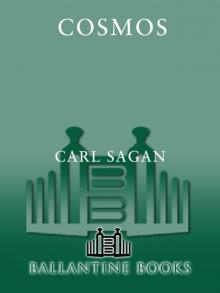 Cosmos
Cosmos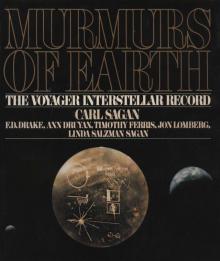 Murmurs of Earth
Murmurs of Earth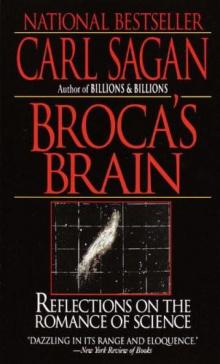 Broca's Brain
Broca's Brain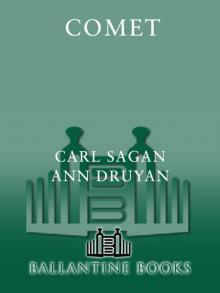 Comet
Comet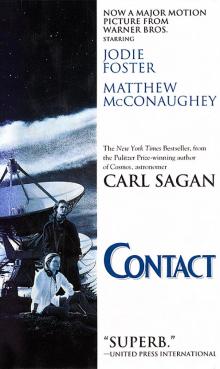 Contact
Contact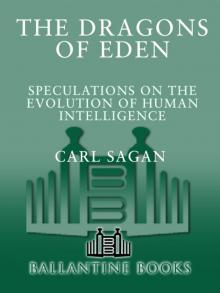 Dragons of Eden
Dragons of Eden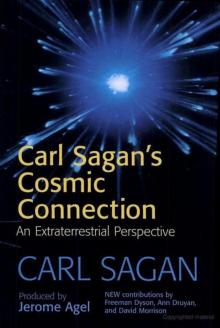 Cosmic Connection
Cosmic Connection Shadows of Forgotten Ancestors
Shadows of Forgotten Ancestors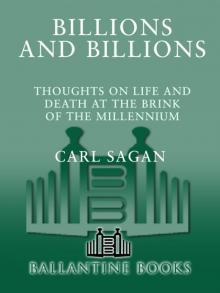 Billions & Billions
Billions & Billions Comet, Revised
Comet, Revised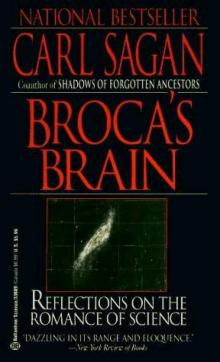 Broca's Brain: The Romance of Science
Broca's Brain: The Romance of Science The Varieties of Scientific Experience: A Personal View of the Search for God
The Varieties of Scientific Experience: A Personal View of the Search for God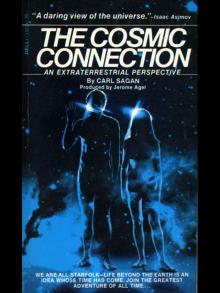 The Cosmic Connection
The Cosmic Connection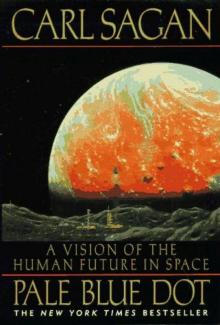 Pale Blue Dot: A Vision of the Human Future in Space
Pale Blue Dot: A Vision of the Human Future in Space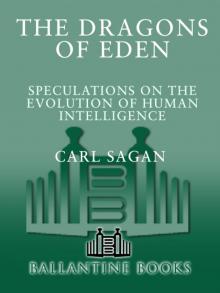 The Dragons of Eden
The Dragons of Eden